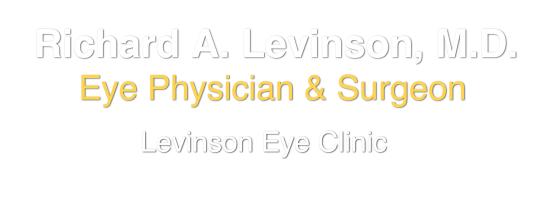
Fears About the Laser Vision Procedure
Answers for Common Fears and Misconceptions
Click title to read details…
What are realistic expectations for Laser Vision Correction Surgery?
Laser Vision Correction is an excellent procedure, but it is not perfect. Realistically, if you are a good candidate for Laser Vision Correction, and if the appropriate procedure is performed with the appropriate Laser technology, you can expect to see to perform your daily activities without the need for glasses or contacts. Your quality of vision should be at least as good as what you could expect to see out of a well-fitting pair of soft contact lenses.
What about glare and halos at night after Laser Vision Correction?
Night Glare and halos were a significant problem for a a small percentage of patients with large pupils when Laser Vision Correction was initially introduced in the late 1990’s. The glare problem at that time was due to Laser treatments with small optical zones. Initially, the standard size optical zone created by the laser was 5.5 mm, but some patients pupils were 7mm or larger, especially at night in the dark. This resulted in significant glare off the edge of the treatment zone, especially at night. The Laser manufacturers subsequently enlarged the size of the optical zones to 6.5 mm and added peripheral blending and smoothing of the outer edge of the optical zone. The large treatment zones on the VISX and WaveLight Excimer Lasers that we use today has significantly decreased the night glare in patients with large pupils.
How dry are your eyes after Laser Vision Correction?
Dryness is very common, initially, after both LASIK and PRK. Lubricating eye drops, or punctal plugs, are usually sufficient to alleviate the dryness. The dryness usually diminishes within 2-4 weeks and is significantly decreased by 4-6 months. Rarely, the dryness can persist indefinitely. Long-term dryness is uncommon after Laser Vision Correction. I think part of the cause of the post-op dryness is that we are inadvertently selecting patients with dry eyes to Laser. Many of our Laser Vision patients have decided to have Laser Vision Correction Surgery because they can no longer comfortably wear their contact lenses, and a very common cause of contact lens discomfort is dry eyes.
How painful is PRK?
Typically, PRK patients experience light sensitivity, watering, burning and gritty sensation lasting 36-48 hours. These symptoms usually start about 24 hours after the PRK procedure. The intensity of the symptoms varies. Most patients can control the pain with over-the-counter pain medication, but prescription pain medication is provided. We also use topical non-steroidal eye drops and an extended-wear soft contact lens to help with pain control. This discomfort is a drawback for PRK, but I don’t have one patient that has regretted having PRK instead of LASIK. The advantages of PRK, ie the long term safety and not having to worry about flap complications, more than offsets the few days of discomfort.
If I get really nervous before or during the procedure, can I get sedation?
Realistically, most people are, understandably, apprehensive and have some anxiety before Laser Vision Surgery. We provide a mild oral valium-like relaxant before Surgery. This seems to adequately relax most people. Fortunately, however, both PRK and LASIK are usually simple procedures, with no discomfort that can safely be safely performed on anybody. I have yet to have a patient that was too anxious to be Lasered safely.
I have heard that ultraviolet light can cause cancer. Can this laser cause cancer or any other diseases of the eye?
The Excimer Laser has been carefully studied in this regard, and there is no risk of cancer from this procedure. Nor is there any risk of cataracts, glaucoma, retinal detachments, macular degeneration or any other known eye disease.
Will I be able to see anything during the Laser Vision Procedure?
Yes. During the procedure, you will be asked to look at a blinking light. This will help to maintain proper alignment of the eye during the procedure. You will not see the actual cutting of the LASIK flap.
What if I move or blink during the procedure?
Patients worry about this a great deal, and their fear is unnecessary because I only use the VISX Star S4 ActiveTrack Excimer and the Autonomous LADAR Excimer. Both of these Lasers have active tracking devices that keep the Laser automatically and accurately centered on your eye, no matter how much you move your eye. No matter how hard a patient tries to hold still, their is still some minimal eye movement. Normal breathing and the heart beating will cause small movements. On the VISX and Autonomous, the computer-controlled robotics keep the Excimer precisely centered. The Nidek Excimer Laser (the Laser used by “low cost” Laser centers) does not have an auto-tracking system, the doctor has a manual “joystick” control on the Laser to keep the Laser centered on your eye. If your eye moves during the LASIK procedure, which it inevitably will, the doctor must manually focus the Nidek Laser. This is not as responsive or as precise as the active tracking Excimer Lasers. Incidentally, you will not be able to blink during the LASIK procedure as your eye will be held open by an eyelid speculum. The speculum rarely causes even minimal discomfort. I have been performing Laser Vision Correction since 1996 and have yet to have a patient that could not cooperate and hold still for the procedure!
Is LASIK painful?
There is virtually no discomfort during the LASIK. No needles are used. The eyes are anesthetized with eye drops that are instilled prior to the procedure. You will feel pressure on your eye for 30-45 seconds while the LASIK flap is being made. The pressure is similar to the pressure you’d feel if you lay face-down on your eye on your pillow in bed. You will not feel the Excimer Laser. LASIK patients rarely experience discomfort post-operatively and if discomfort does occur, it is usually mild and lasts for only a few hours. No prescription pain medication is typically required for LASIK patients.
Are there any risks involved?
The Excimer Laser procedure, like all medical procedures, has limitations and risks, although the risk of having aserious vision-threatening complication is less than 1%. We all fear losing our vision. However, NO cases of blindness have been reported in any FDA Excimer Laser Studies for either PRK or LASIK. Common complications include glare at night (which usually resolves within weeks to months), corneal flap wrinkles (which can usually be treated by “refloating the flap”),and under/overcorrection (which can be successfully retreated 3 months after the initial procedure). If you would like more information, we will be happy to review the potential risks with you in detail.
Can I go blind from Laser Vision Surgery?
Anything is “possible” but very, very unlikely. There has not been one case of blindness reported in any of the FDA studies.
I have talked to people who are not happy with LASIK. How come?
When talking to a person that is not happy with their LASIK result, I would ask the following questions. First, when was the procedure performed and which Excimer Laser was used. Excimer Lasers prior to May, 2001 did not have auto-tracking devices, did not have large treatment zones and did not have SmoothScan technology. Patients Lasered after May, 2001 on the VISX Star S3 or S4 or the Autonomous Excimer Laser have a significantly lower incidence of glare and halos, the most common LASIK problems. Second, I would ask who performed their LASIK procedure. Did they go to a “low -cost, high volume” Laser Center where they only met the Laser Surgeon at the time of surgery. In my experience, patients who choose a LASIK Surgeon that they have met prior to surgery and who performs their surgery and all post-op visits, have been happier with their LASIK results than those patients who go to “low-cost, high volume”. In the “low-cost, high-volume” Laser centers, patients have little or no contact their Lasik Surgeon and have their pre and post-op care performed by optometrists or technicians. It is difficult to have confidence in the LASIK Surgeon when you never even get to meet your Laser Surgeon! Third, ask if the unhappy Lasik patient is over 45 years old and having difficulty adapting to either monovision or the need for reading glasses. People over 45 have difficulty focusing their eyes for near vision; this is due to their age, not LASIK.
Will I smell anything during the LASER procedure?
Each pulse of the Excimer Laser removes approximately .25 microns (about 3000 molecules) of corneal tissue by breaking carbon-carbon bonds. A by-product of the tissue ablation is the release is ozone, which smells somewhat like “burning hair”.
I have been told I am not a candidate for LASIK.
I have seen, and successfully treated patients that were told they were not LASIK candidates. Some eye doctors simply do not understand LASIK, are not aware of technologic advances, or are not comfortable recommending LASIK to their patients and tell potential LASIK patients that they are not a candidates for LASIK. I have seen potential LASIK candidates that were told, incorrectly, by their eye doctor that they would not get a good result or would experience intolerable “side effects” and were subsequently Lasered by me and got excellent results. Also, a patient may not not be candidate for LASIK, but may be an excellent candidate for PRK. If you were told that you are not a candidate for LASIK, I would recommend that you get another evaluation. I offer you a complementary (ie free) consultation to determine if you are a candidate for Laser Vision Correction.
If Laser Vision Correction is so safe, why am I scared?
Laser Vision Correction is scary because it’s Eye Surgery! The thought of Surgery is unnerving, and the thought of Eye Surgery can be really unnerving. Laser Vision Correction can be stressful for you emotionally, and can cause you considerable anxiety. I share your concern about the safety of Laser Vision Correction and take every possible precaution to make Laser Vision Surgery as safe as possible. I find it extremely comforting for me that if I meticulously perform Laser Vision Surgery, following well-established patient selection criteria, using properly maintained, state-of-the-art equipment, the outcomes are extremely safe and predictable. It is the unknown that frightens us, and we can decrease the fear of Laser Vision Correction by preparing and understanding what is happening to us at each step of the procedure. I want no surprises for me or my Laser Vision Correction patients. I have nine members of my office and medical support staff who are specifically trained in Laser Vision Correction patient support. My staff and I are involved with each Laser Vision Correction patient during the preoperative evaluation, the actual Laser Vision Correction procedure, and the postoperative period. It has been my experience that if you have established confidence in me and my support staff by meeting us at the preoperative evaluation, and we prepare you to understand what to expect at each step of the Laser Vision Correction procedure, and we provide a kind, compassionate, and supportive environment for you during your procedure, then we can significantly decrease your emotional stress during Laser Vision Correction. And if kindness and information are not enough to relax you, we also provide you with Valium.
Seeing the World
After LASIK Surgery

You can expect to see to perform your daily activities without the need for glasses or contacts.
The Fine Art of Vision Care

